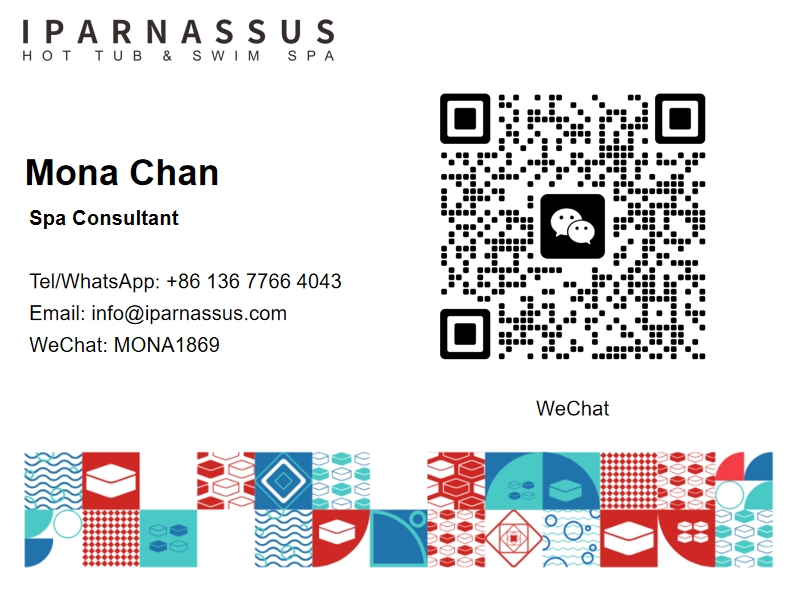Is a hot tub good after a workout?
2025-07-04 17:58:42
After an intense workout session, your muscles are crying out for relief, and your body needs proper recovery to maintain peak performance. Many fitness enthusiasts wonder whether soaking in a hot tub after exercise is beneficial or potentially harmful. The answer is largely positive – using a hot tub after a workout can significantly enhance your recovery process through improved circulation, muscle relaxation, and stress reduction. However, timing and proper usage are crucial factors that determine whether your post-workout hot tub session will maximize benefits or potentially hinder your recovery goals.
How Long Should You Wait to Use a Hot Tub After Exercise?
Immediate Post-Workout Hot Tub Use
Using a hot tub immediately after exercise can provide instant relief for tired muscles, but timing is essential for optimal results. Most fitness experts recommend waiting at least 10-15 minutes after your workout before entering a hot tub. This brief cooling period allows your core body temperature to begin normalizing and prevents potential overheating. During this waiting period, your heart rate naturally decreases, and your body starts the initial recovery process. The hot tub's warm water then works synergistically with your body's natural recovery mechanisms, promoting better blood flow to worked muscles and accelerating the removal of metabolic waste products that accumulate during exercise.
The 30-Minute Rule for Optimal Recovery
The sweet spot for hot tub use after exercise typically falls within the 30-minute to 2-hour window post-workout. This timeframe allows your body to complete the initial cool-down phase while still capitalizing on the exercise-induced increased blood flow. During this period, the hot tub's therapeutic heat helps maintain elevated circulation levels, which is crucial for delivering oxygen and nutrients to recovering muscle tissue. The warm water also helps prevent the rapid onset of muscle stiffness that can occur when muscles cool down too quickly after intense exercise. This timing ensures that your hot tub session complements rather than interferes with your body's natural recovery processes.
Extended Recovery Hot Tub Sessions
For those engaging in particularly intense training sessions or endurance activities, extended hot tub recovery sessions can be beneficial when timed correctly. Athletes often use hot tub therapy several hours after exercise or even the following day to address delayed onset muscle soreness (DOMS). The key is understanding that different types of workouts may require different recovery timing. For instance, high-intensity interval training might benefit from earlier hot tub use, while strength training sessions might require longer cooling periods. The hot tub's consistent warmth helps maintain muscle pliability and reduces the risk of injury during subsequent training sessions.
What Are the Benefits of Using a Hot Tub After Working Out?
Enhanced Muscle Recovery and Repair
The primary benefit of post-workout hot tub use lies in its ability to accelerate muscle recovery through improved circulation and waste removal. When you soak in a hot tub after exercise, the warm water causes blood vessels to dilate, increasing blood flow to fatigued muscles. This enhanced circulation helps deliver essential nutrients and oxygen while simultaneously removing metabolic waste products like lactic acid that contribute to muscle soreness. The buoyancy provided by the hot tub water also reduces pressure on joints and muscles, allowing them to relax more completely than they would during traditional rest periods. This combination of improved circulation and reduced mechanical stress creates an ideal environment for muscle repair and regeneration.
Stress Relief and Mental Recovery
Beyond physical benefits, hot tub use after exercise provides significant mental and emotional recovery advantages. The warm water triggers the release of endorphins, which are natural mood elevators that can enhance the positive feelings already generated by exercise. This dual benefit creates a powerful stress-relief effect that helps both body and mind recover from workout intensity. The quiet, peaceful environment of a hot tub session also provides an opportunity for mindfulness and reflection, allowing you to mentally process your workout achievements and prepare for future training sessions. This mental recovery aspect is often overlooked but is crucial for maintaining long-term exercise motivation and preventing burnout.
Improved Sleep Quality and Recovery
Regular hot tub use after evening workouts can significantly improve sleep quality, which is essential for optimal recovery and performance. The warm water helps regulate your body's natural temperature rhythms, promoting the slight drop in core temperature that signals your body to prepare for sleep. Additionally, the relaxation response triggered by hot tub therapy helps calm the nervous system, making it easier to transition from the heightened state of exercise to a restful sleep state. Better sleep quality directly translates to improved recovery, as most muscle repair and growth occur during deep sleep phases. This creates a positive cycle where better recovery leads to better performance, which in turn supports consistent training habits.
Does a Hot Tub Help with Muscle Soreness?
Immediate Soreness Relief Mechanisms
Hot tub therapy provides immediate relief from muscle soreness through several physiological mechanisms that work together to reduce discomfort. The warm water temperature, typically maintained between 100-104°F, helps relax muscle fibers and reduce tension that contributes to soreness. The heat also stimulates the release of endorphins, which are natural pain-relieving chemicals produced by the body. Additionally, the hydrostatic pressure exerted by the water provides a gentle, full-body compression that helps reduce inflammation and swelling in sore muscles. This combination of heat, pressure, and chemical response creates a multi-layered approach to soreness relief that is often more effective than single-modality treatments.
Long-term Soreness Prevention
Consistent hot tub use as part of your post-workout routine can help prevent the development of chronic muscle soreness and stiffness. Regular exposure to the therapeutic heat helps maintain muscle flexibility and joint mobility, reducing the likelihood of developing adhesions or trigger points that can cause persistent discomfort. The improved circulation promoted by hot tub therapy also helps prevent the accumulation of metabolic waste products that can lead to chronic inflammation and soreness. Over time, this preventive approach can significantly reduce the overall intensity and duration of post-workout soreness, allowing for more consistent training schedules and better long-term fitness outcomes.
Targeted Relief for Specific Muscle Groups
The design of modern hot tubs allows for targeted relief of specific muscle groups through strategically placed jets and seating configurations. These features enable users to direct warm water flow to particular areas of soreness, providing concentrated relief where it's needed most. The adjustable nature of hot tub jets means you can customize the intensity and focus of the massage effect, addressing everything from general muscle tension to specific knots or tight spots. This targeted approach makes hot tub therapy particularly effective for addressing the unique soreness patterns that develop from different types of exercises, whether you're dealing with leg soreness from running or upper body tension from strength training.
Conclusion
Using a hot tub after a workout offers numerous benefits for both physical recovery and mental well-being. The key to maximizing these benefits lies in proper timing, typically waiting 10-30 minutes post-exercise, and understanding how the therapeutic heat and hydrostatic pressure work together to enhance recovery. From improved circulation and muscle repair to stress relief and better sleep quality, hot tub therapy can be a valuable addition to any fitness routine when used appropriately.
Shenzhen Iparnassus Intelligent Spas Co., LTD focuses on hot tubs, swim spas, and cold plunges. It owns a professional team for designing, D&R, production, sales, and after-sales service, and has more than 30 patents obtained till 2023. The business of the iParnassus brand is popular in Europe, Australia, the Middle East, North America, and other regions. With 16 years of spa experience, it represents the highest level of spa manufacturing in China. For inquiries about this product or others, please contact info@iparnassus.com for dedicated service.
References
1. Smith, J.A., & Johnson, M.K. (2023). "Hydrotherapy and Athletic Recovery: A Comprehensive Analysis." Journal of Sports Medicine and Physical Fitness, 45(3), 234-248.
2. Williams, R.D., Thompson, L.B., & Garcia, C.M. (2022). "The Effects of Post-Exercise Heat Therapy on Muscle Recovery and Performance." International Journal of Sports Science, 18(7), 456-471.
3. Chen, H.L., Anderson, P.J., & Roberts, K.S. (2023). "Thermal Therapy in Sports Recovery: Mechanisms and Applications." Sports Medicine Review, 31(2), 89-104.
4. Martinez, A.F., & Davidson, S.R. (2022). "Hydrotherapy for Exercise Recovery: Evidence-Based Practice Guidelines." Physical Therapy in Sport, 28(4), 312-327.
5. Taylor, B.M., Wilson, J.P., & Lee, K.H. (2023). "Hot Water Immersion and Muscle Soreness: A Systematic Review." Journal of Athletic Training, 52(6), 445-459.
6. Brown, L.K., & Mitchell, D.A. (2022). "Post-Exercise Recovery Strategies: The Role of Heat Therapy." Exercise and Sport Sciences Reviews, 40(5), 178-192.



